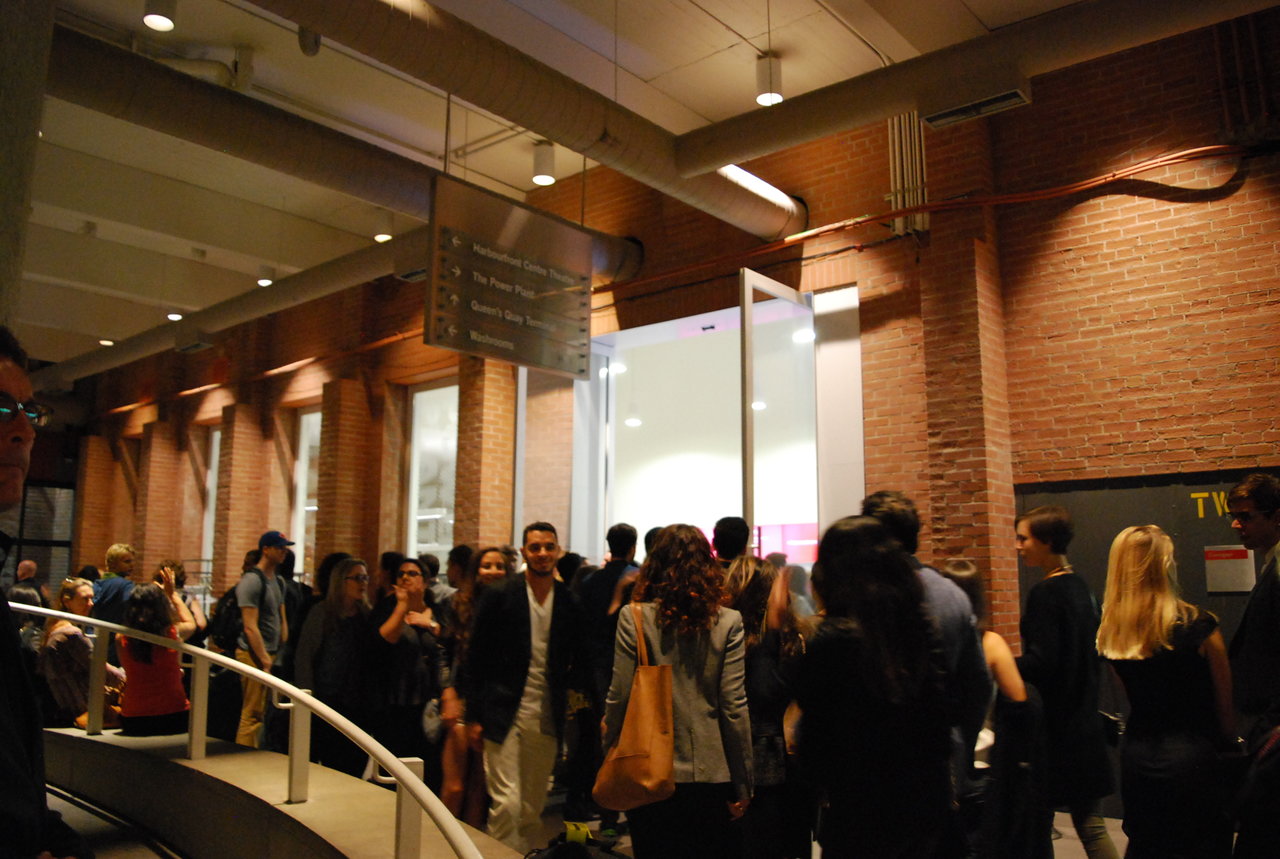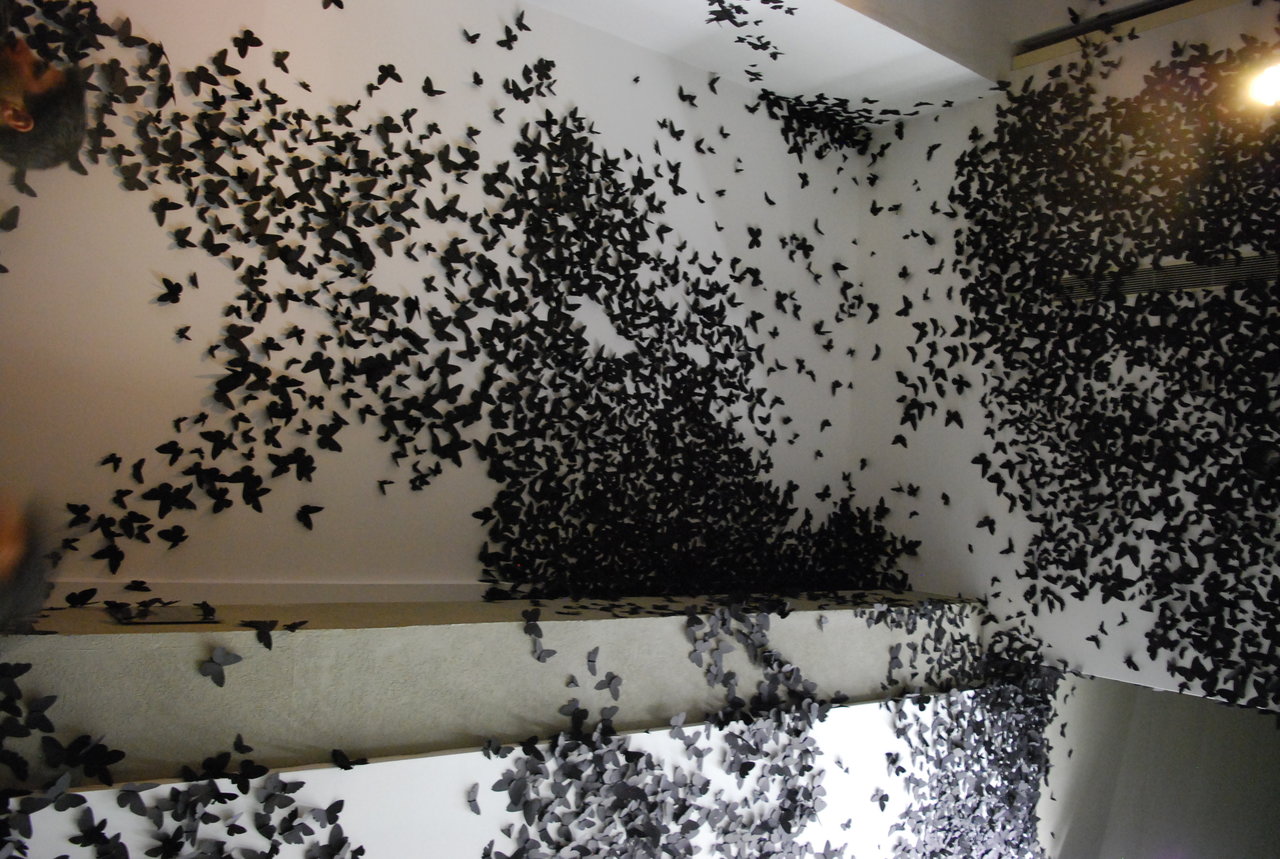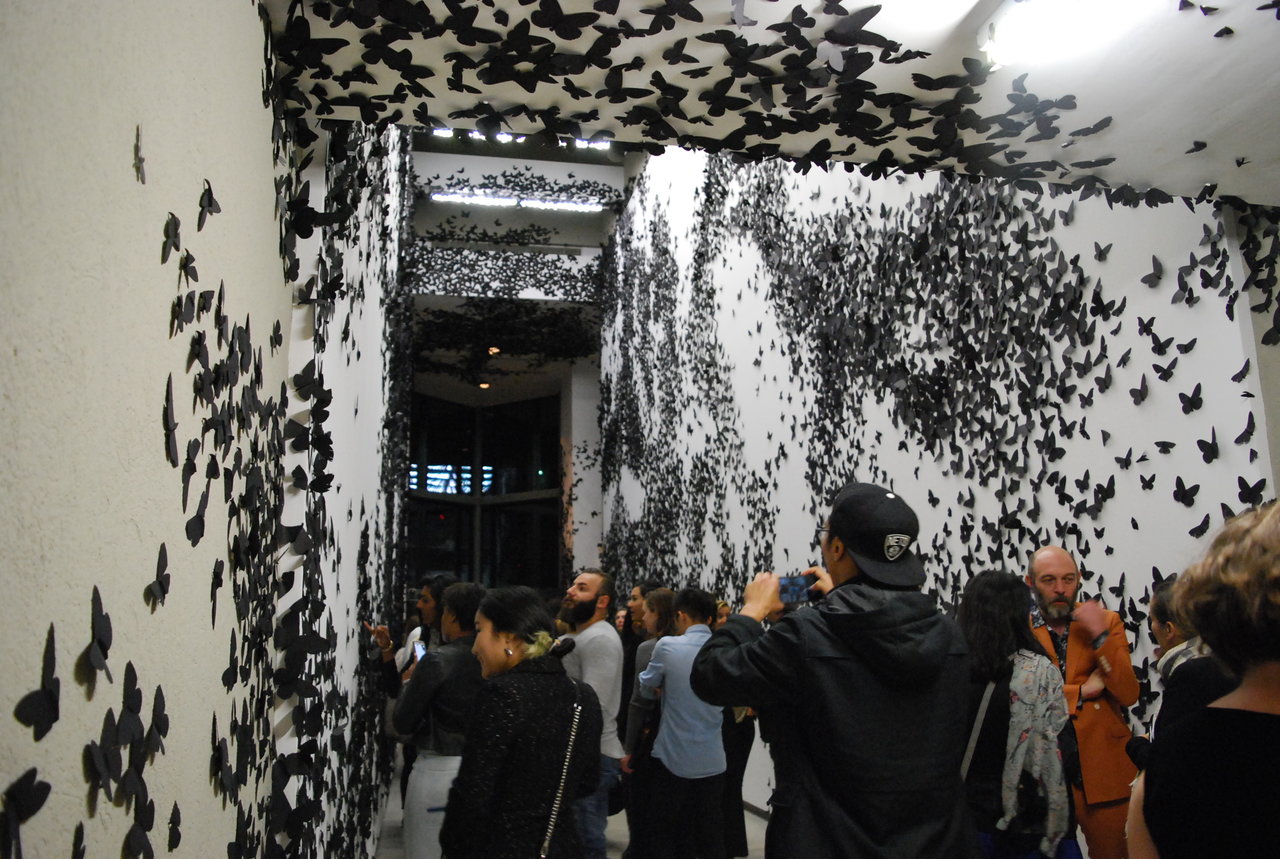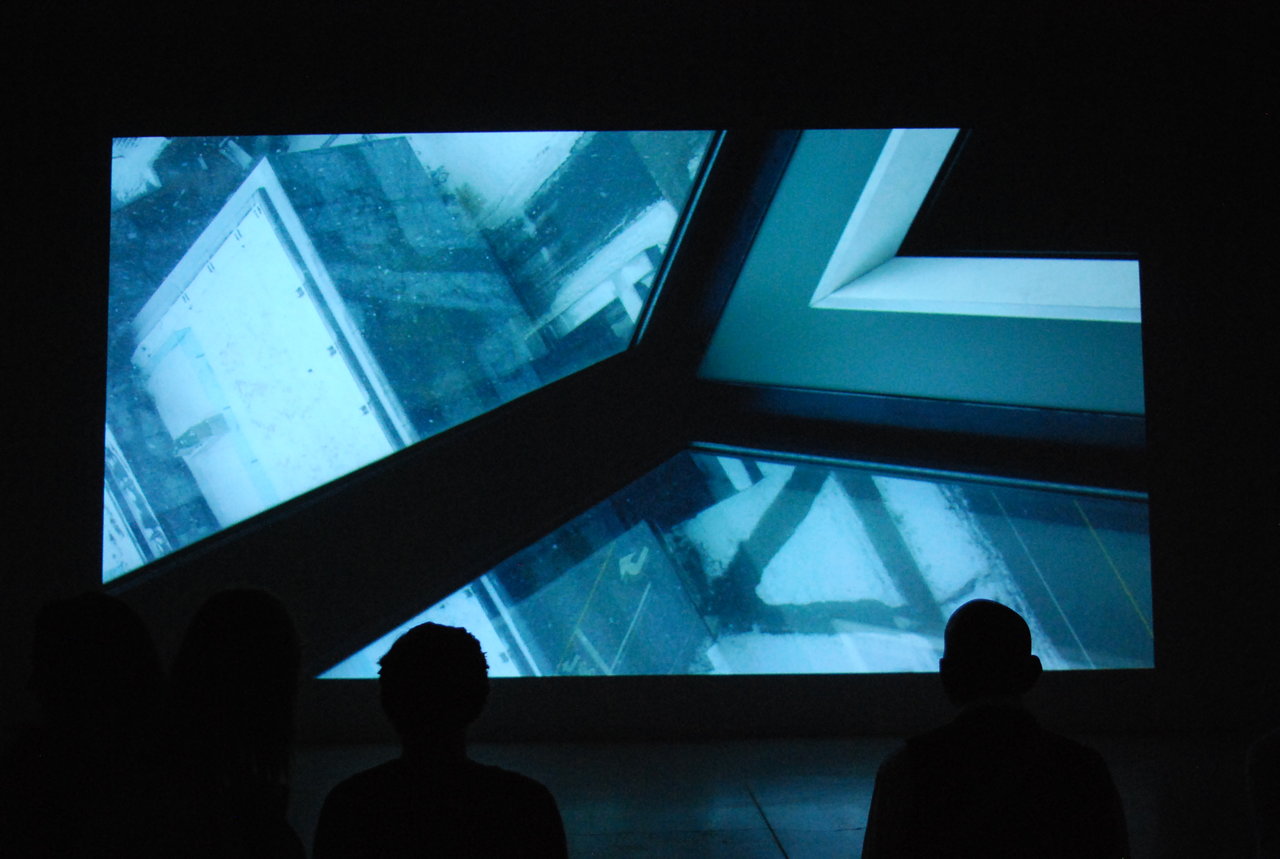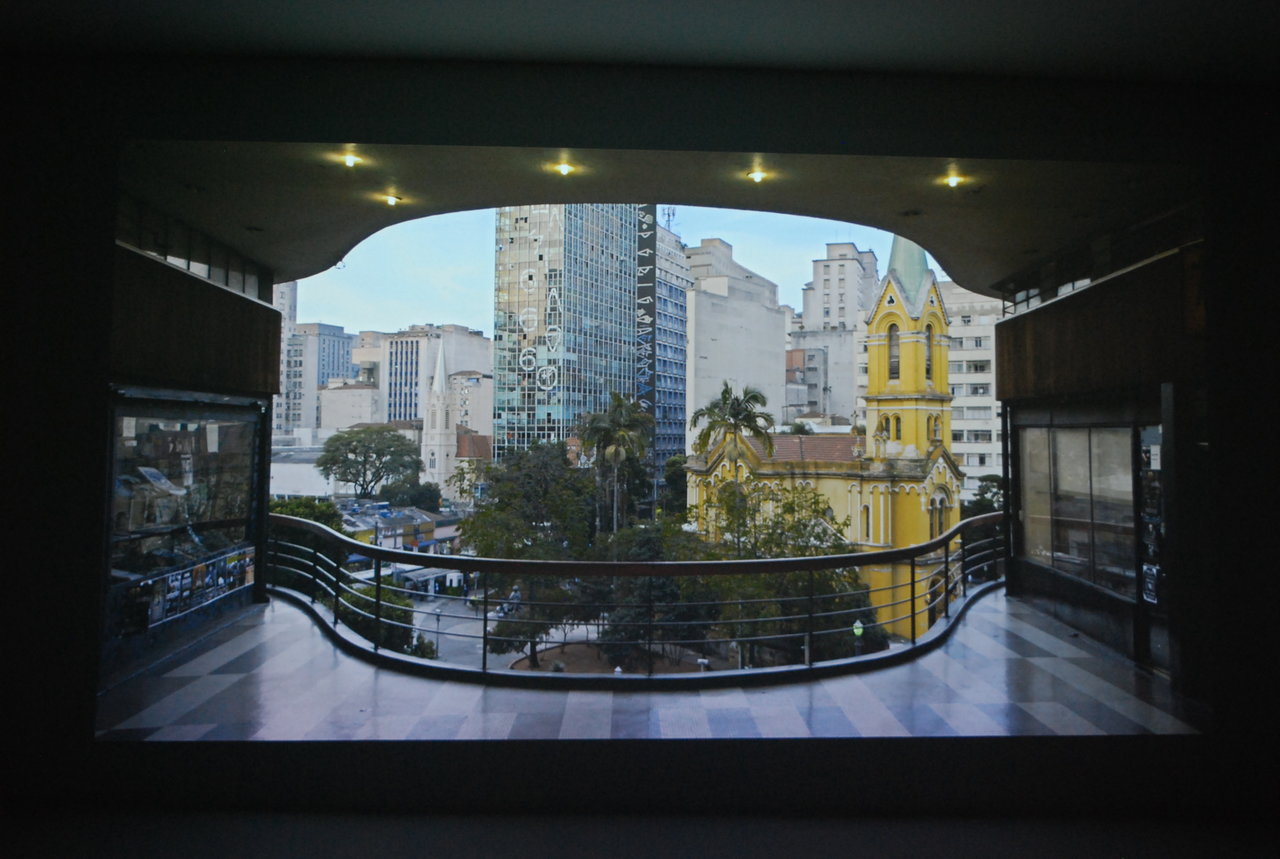The Power Plant Contemporary Art Gallery welcomed the fall season with quite a crowd. With visitors lined up around the building, Power Plant’s opening party was a huge success. The gallery introduced three major solo exhibitions by three international artists: Carlos Amorales, Dora Garcia, and Mark Lewis. It was one of those nights where you get sucked into the crowd, forced to follow the flow of people. That combined with the layout of the gallery and the different atmosphere of each exhibition, the space transports you from one world to another, through an endlessly surprising maze. One second you’re standing in the midst of Amorales’s installation, staring at the black hole of swarming moths, then all of a sudden you’re gazing at Garcia’s work, listening to the gentle conversations in her film, The Joycean Society.
Amorales’s Black Cloud overwhelms us. As we enter, it swallows us into its world. Spilling out of Power Plant’s main hall are 30,000 moths – all black and of various sizes. Cut with precision (probably with a laser cutter) and then folded for dimension, these moths cover everything from the wall to the light fixtures. Some are cut perfectly, and some are cracked and frayed. However, even the imperfect marks are cut perfectly with the cutter, reproduced honestly from Amorales’s archive. The initial reaction when entering is one of wonder and delight. This sensation soon turns into a grim one, however, as the gaze moves up to see a concentrated corner near the ceiling. It is far enough that the moths no longer look like cute cut out shapes, but an ominous infestation. It is a strange mixture of emotions because at our eye level (where it is possible to look at these shapes closely), the moths are friendly and non-threatening. Only when we start looking up do the moths start to cover the lights, spill into the second floor as well as entrances; fear emerges.
To the right of Black Cloud is the entrance to Dora Garcia’s work I See Words, I Hear Voices. It’s a highly complex work that investigates relations between individuality and community, with a focus on literature. On the projector plays Garcia’s film The Joycean Society, a 2013 film featuring a group of scholars who congregate to discuss novels by James Joyce. Using every source possible, from personal letters to encyclopedias, the group investigates every word in the novels with scrutiny to analyze Joyce. On the wall is a large drawing of what looks like rough sketch that features figures, mathematical and circular shapes, as well as writing. Overlooking the screen are three tables that contain various archival books, sketches, notes, and mails that Garcia has collected in an attempt to study the relationship between reading and writing. On the last table sits a person, watching a clip on a small TV and writing endless notes in his journal. Near the tables is a blackboard with symbols and definition, which appear in the archived notes on the tables. There are subtitles for the film, which is supposedly placed because the space was very loud and crowded. However, the screen is so large that, in a sitting position, the subtitles are all we see. It takes the focus away from the film itself, so the viewer end up missing a lot of mise-en-scene because the huge white letters steal all the focus. This exhibit should be visited on day not so crowded to fully absorb the atmosphere.
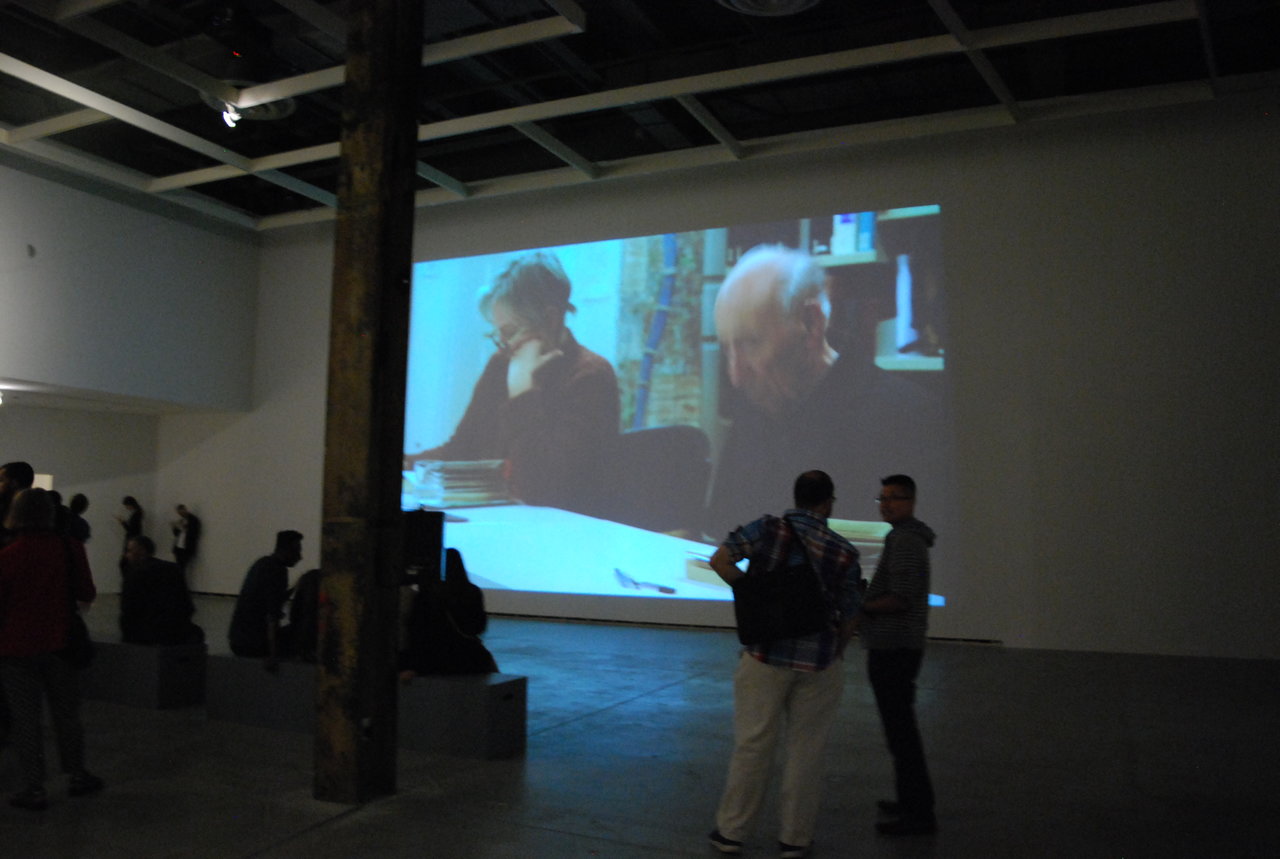 Dora Garcia, The Joycean Society
Dora Garcia, The Joycean Society
To the left of Black Cloud and upstairs are video works by Mark Lewis. Invention is a group of shorts shot by Mark Lewis that plays with and examines the architectural details and perspectives in Toronto. Out of the five shorts that he presented in Power Plant, the most effective one is the clip featuring Robarts Library at University of Toronto. The short starts out with a panning shot of the Toronto city scape, then swiftly moves into a window of the library. Digitally mastered to look like one long continuous shot, the camera moves into the window, and once inside it turns around to face the outside. The camera then flips upside down, destabilizing the audience. The sharp corner of the window allows for a dramatic composition as the camera slowly and smoothly floats around, eventually turning back down and re-stabilizing us. His camerawork is effective to the point that I felt nauseated at times, as the undulating sequence plays with my perspective. Even though I was sitting down, it jilted my sense of balance.
Lewis’s other works are highly accomplished as well. Galleria Do Work features a dramatic example of the dolly zoom. Set in a beautiful terrace overlooking an equally beautiful cityscape, the camera moves in while the lens zooms out, causing the shot to warp and distort in the most strange manner.
These exhibitions in the Power Plant work to displace the audience. They transport us to another dimension – into a swarm of insects, into the pleasant voices dissecting Joyce, and into the architecture of Toronto like never before. In a highly addicting manner, Power Plant draws us in with the allure of escape.
Text and photo: Sunny Kim
*Exhibition information: Carlos Amorales: Black Cloud, Dora Garcia: I See Words, I Hear Voices, Mark Lewis: Invention, September 26, 2015 – January 3, 2016, The Power Plant, 231 Queens Quay West, Toronto. Gallery hours: Tue – Sun, 10 a.m. – 5 p.m.; Thur 10 a.m. –8 p.m. Open holiday Mondays.

